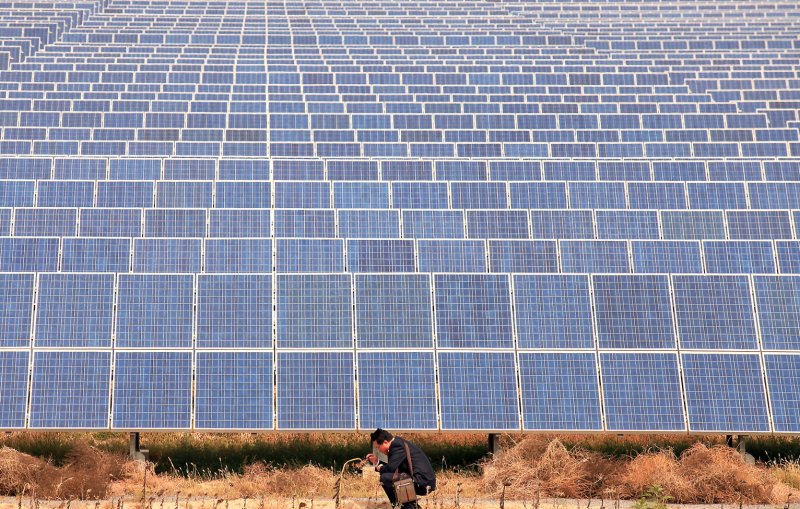1 of 2 | A Chinese man talks on his phone next to a solar panel field operating in the Taiyangshan Development Zone in Wuzhong, a frontier city in the northwestern province Ningxia Hui Autonomous Region on September 22, 2011. The 215 square mile zone has the advantages of both strong wind and solar power, resulting in 300 megawatts of wind power and 100 megawatts of photovoltaic power. Taiyangshan is the biggest clean energy base in China. UPI/Stephen Shaver |
License Photo
SYDNEY, Feb. 13 (UPI) -- Researchers in Australia are developing a solar roof system that uses wasted energy to warm air and water.
What distinguishes the project from other systems, the researchers say, is that the solar cells are integrated into the structural makeup of a building. So instead of being attached to a roof, the system actually becomes the roof, The Sydney Morning Herald reports.
The system evolved from a "low carbon living" project to investigate future energy efficiency initiatives while evaluating the effectiveness of current methods of generating solar power, said the researchers from the University of New South Wales.
"Australia has this perception that we are blessed with limitless energy but by the time we have filtered it through the system and into buildings in the form of electricity, there is enormous waste. So we are gathering the data to make informed decisions about that,'' associate professor Alistair Sproul told the Herald.
If solar panels are extra-durable, the researchers say, they can serve as roofing material.
While solar cells on top of panels typically generate a significant amount of waste heat as a by-product, the researchers devised a way to harness it instead with an insulated space behind the panel, heating the air to 25 degrees Celsius.
''We want to take the building performance to the next level,'' said research leader Professor Deo Prasad.
'In the past we have had separate experts working on solar panels, on energy efficiency, water efficiency but what we are looking at now is total integration from the start.''
The researchers are investigating the possibility of manufacturing the system in Australia and said a number of firms are monitoring their research with that in mind.
''A lot of lower-tech forms of photovoltaics seem to be finding their way into countries where there are cheaper labor costs, so we want to concentrate on developing these high-tech, high-end forms,'' Prasad said.
Australia relies on coal to generate 80 percent of its electricity.
Last year, roof-mounted solar panels in Australia for the first time competed favorably against peak-priced electricity from coal-fired power stations, Asian Scientist magazine reports. Solar photovoltaic panels cost around $1.07, compared to $3.75 per watt a few years ago.
Separately, the future of southwest Queensland's proposed Solar Dawn $1.2 billion solar thermal plant appeared uncertain after it failed to meet a Dec. 15 deadline to compete financing but last week the government granted a six-month extension to its contract.















